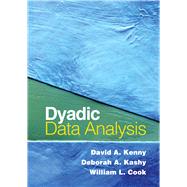Interpersonal phenomena such as attachment, conflict, person perception, helping, and influence have traditionally been studied by examining individuals in isolation, which falls short of capturing their truly interpersonal nature. This book offers state-of-the-art solutions to this age-old problem by presenting methodological and data-analytic approaches useful in investigating processes that take place among dyads: couples, coworkers, or parent-child, teacher-student, or doctor-patient pairs, to name just a few. Rich examples from psychology and across the behavioral and social sciences help build the researcher's ability to conceptualize relationship processes; model and test for actor effects, partner effects, and relationship effects; and model the statistical interdependence that can exist between partners. The companion website provides clarifications, elaborations, corrections, and data and files for each chapter.








